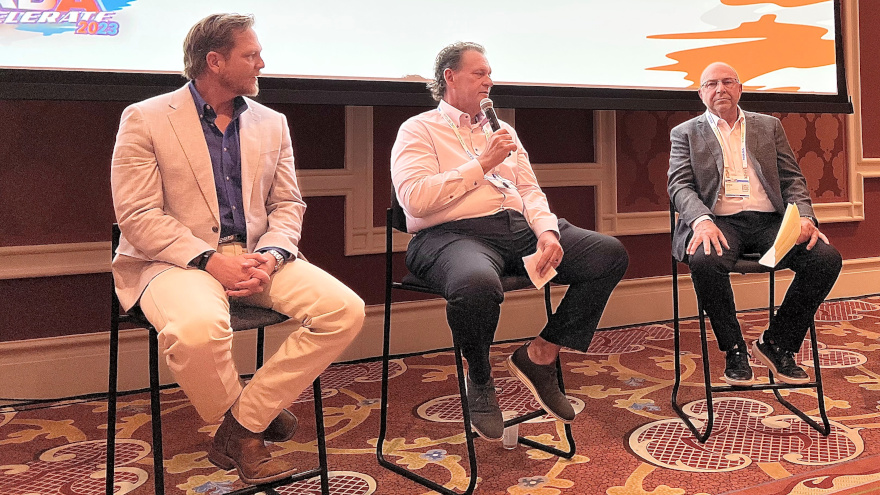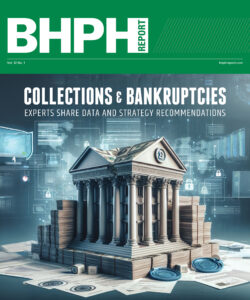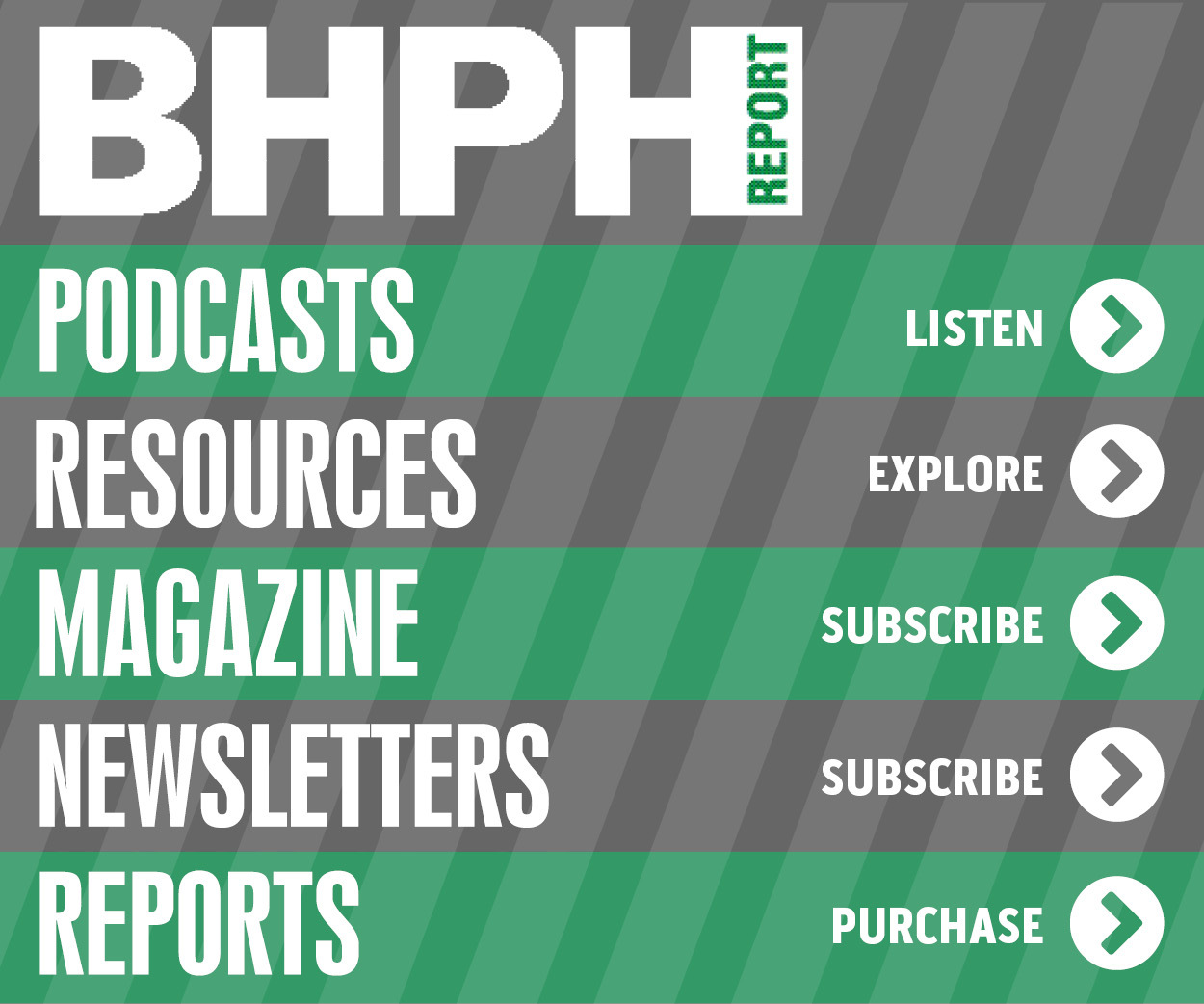BHPH dealers see challenges & opportunities in their numbers

Pictured from left for a BHPH dealer panel at the 2023 NIADA Convention in Las Vegas are Chad Randash, Jeff Baker and Eddie Hale. Photo by Andrew Friedlander.
The buy-here, pay-here business is all about numbers — especially when times are tight.
So with the economy wavering and uncertainty all around, a panel of successful BHPH dealers talked about numbers in a session at last week’s NIADA Convention and Expo in Las Vegas.
“Some of these numbers tell you where you are, some will tell you where you’ve been, and some will definitely tell you where you’re going,” said Eddie Hale of Neighborhood Autos in North Texas. “The way I watch our business is the trends — where we’ve been and where we’re going. We can figure out real quick where we’re at. But we’re looking at where are we going and how are we going to get there and still be able to pay the bills.”
Among those numbers, Hale said, is adding up his expenses, including payroll, and figuring out his total costs per car. On the collections side, a key is what it costs to collect on an average account.
“Those are numbers that will give you a direct reflection on why you’re profitable or not profitable,” he said. “And if you’re not profitable, or not as profitable as you want to be, how you can fix that.”
Looking at the trends in recent years, Hale scaled his operation back from right locations to three, going from 6,000 accounts to 4,000 and shrinking his inventory.
“We moved backward on purpose,” he said. “Being around a long time you experience some of these resets in the economy or in the industry. And that’s the kind of thing we felt we were seeing — trends that were bringing us toward a new reset. And being conservative, we decided to de-leverage, to remove ourselves from debt and prepare for the next growth.
“Because with every fall, there’s always opportunity. So we wanted to prepare for the next opportunity.”
The numbers have been troubling for Chad Randash, owner of Randash Automotive, with locations in Billings and Bozeman, Mont.
After riding high in the early post-COVID days, things have changed.
“All of a sudden I felt like I got smacked with a two-by-four these past 18 months,” he said. “I like control. I don’t need to fly the plane, but I’ve got to make sure that the guy flying it is in control. I feel like lately, I’ve been out of control.”
The employees Randash had been paying $21 per hour were now demanding $28. Cars he once acquired for $7,000 now cost $9,000. And passing the costs on to his customers would drive their payments to the brink of their ability to pay.
“We’re pushing that from $87 to $97 to $117, and this could be very dangerous,” he said. “We may lose 25% of our portfolio. It’s a reality. And it’s a conversation I’ve got to have with the bank, number one, but I’ve also got to understand where we’re at if I lose 25%. What happens then? If the interest rates keep on rising, at some point we have to go down in car value.”
“This is a pivotal point. We’re hurting, some of us, but we’ve got to battle through it. We’ve got to be more present in our business than we ever have before. We’ve got to look at every line item. And that’s just how it is. … It’s a moving machine, and you’ve got to hang on for the ride.”
Despite all the challenges, the dealers on the panel agreed that dealers who control their expenses and weather the storm, will come out strong on the other side.
“It’s a very interesting time,” said veteran BHPH dealer Jeff Baker of Car City in Michigan. “Fortunately, we started to deleverage five years ago, so we’ve got a lot of dry powder.
“I’m kind of half-hoping there is a recession. Because I’m pretty sure if there is one, the back side of it is going to have some beautiful opportunities. And I think I’m sitting in a great position to take advantage of that.”
“The reason we went backward was to go forward,” Hale added. “There are some silver linings out there.”
And Randash said he’s going all-in to find them.
“We’ve got to get re-engaged in this,” he said. “You have a decision to make. At some point, if you’re trying to get somewhere, you’re either going to play this conservatively or you’re going to say there’s a tremendous opportunity and I’m going to push. Because the reality is, I’m scared. I’ve got 56 employees, thousands of accounts and I’ve got a young family. So do you play it safe or do you look at this hard and ask, ‘Is there an opportunity here?’ ”

 View The Latest Edition
View The Latest Edition

